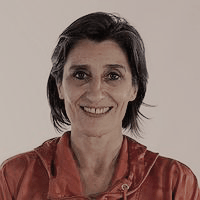Graphic Design
[dropcaps color=’#ffffff’ background_color=’#eb005d’ border_color=” type=’square’]T[/dropcaps]
he degree of “mestre” (master) aims to develop and deepen the knowledge obtained at the undergraduate level and is awarded to those students that demonstrate knowledge and understanding that allow and constitute the basis for original developments and/or applications, in the context of project or research.
ability to understand and solve problems, as well as the ability to integrate knowledge, deal with complex issues, develop solutions or make judgments.” text_color=”#ffffff”]
Integrated in a polytechnic higher education institution that promotes the creation, transmission and diffusion of culture and knowledge of a professional nature, through the articulation of study, teaching, oriented research and experimental development, the Master in Graphic Design presents a curricular structure eminently practical and oriented to the working reality in the specialty of Communication Design.
The course is the result of a partnership between the Escola Superior de Artes Aplicadas de Castelo Branco and the Faculade de Arquitetura of the University of Lisbon, which considered this training offer important, signing the present Master’s Degree in association, with a certified diploma and authorized by the Agency for Evaluation and Accreditation of Higher Education.
It is a course already consolidated, with a professional profile and eminently practical, in which students develop projects with companies in the region and benefit from the professional experience of national and international employees.
We have been establishing partnerships with companies, professionals, research centers, business associations and incubators / projects, which allow us to know better the business reality and an entrepreneurial and proactive spirit.
The cycle of studies is structured in four semesters, two years, the first curricular and the second for the development of a dissertation, project or curricular stage. The curricular structure of the Master’s Degree in Graphic Design guarantees the acquisition of skills in particular in the following areas: Visual Identity; UX Design (interface design and user experience); Information Design (signage and static and animated infography); Typography and Editorial Design.
Coordinator
João Vasco Matos Neves
joaoneves@ipcb.pt
[/custom_font]
Scientific Committee
- Daniel Raposo Martins
- João Vasco Matos Neves
- Isabel Castro
- Rita Assoreira Almendra
- Marco António Neves da Silva
- Teresa de Jesus de Olazabal Cabral
[/unordered_list]
Objectives
[dropcaps color=’#ffffff’ background_color=’#eb005d’ border_color=” type=’square’]T[/dropcaps]
he Master’s objectives are to train professionals in Graphic Design and Multimedia with knowledge and skills in the autonomous resolution of complex real projects in broad or multidisciplinary contexts, as well as the training of professionals with advanced knowledge in research, innovation, design, planning, development and implementation of projects in the specialty of Graphic Design and Multimedia, integrating diverse knowledge, as well as the coordination of project teams, consulting or issuing technical opinions.
We are also looking to train staff in the specific areas of Graphic and Multimedia Design, capable of integrating Design and Consulting companies, Advertising agencies or Design, Communication, Consulting, Image and Marketing departments in companies of several activity sectors.
Professional Outings
[dropcaps color=’#ffffff’ background_color=’#eb005d’ border_color=” type=’square’]B[/dropcaps]esides the development of a professional or vocational activity area, the Master in [highlight color=” background_color=”] Graphic Design[/highlight] seeks to involve students to a greater specification of the student.
Study Plan
1st Year – 1st Semester
| Course units | Working time | Credits |
| Total (h) | Contact | ||
|---|---|---|---|
| History and Theory of Communication Design | 81 | TP: 60; OT: 8; | 3 |
| Communication Design Laboratory I | 243 | TP: 75; OT: 8; | 9 |
| Project Management and Deontology | 108 | TP: 45; OT: 6; | 4 |
| Production, New Media and Consumption | 162 | TP: 60; OT: 8; | 6 |
| Research Methodologies and Techniques | 108 | TP: 45; OT: 6; | 4 |
| Option I: Design and Technologies or Digital Environments | 108 | TP: 45; OT: 6; | 4 |
1st Year – 2nd Semester
| Course units | Working time | Credits |
| Total (h) | Contact | Unids curriculares | |
|---|---|---|---|
| Design and Innovation | 135 | TP: 60; OT: 8; | 5 |
| Communication Design Laboratory II | 378 | TP: 120; OT: 20; | 14 |
| Advanced Typography Studio | 135 | TP: 60; OT: 8; | 5 |
| Option II: 4D Information Design or Visual and Cognitive Ergonomics | 135 | TP: 35; OT: 8; | 5 |
Annual
| Course units | Working time | Credits |
| Total (h) | Contact | Unids curriculares | |
|---|---|---|---|
| Seminar | 81 | S: 20 | 1 |
2nd Year
| Course units | Working time | Credits |
| Total (h) | Contact | Unids curriculares | |
|---|---|---|---|
| Project or Internship in Communication Design | 1620 | TP: 90; OT: 90; E: 1060; | 60 |
Entrance
They may apply for access to the cycle of studies leading to the degree of Master in Graphic Design at the School of Applied Arts of the Polytechnic Institute of Castelo Branco in association with the Faculty of Architecture of the Technical University of Lisbon:
[/custom_font]
- a) Holders of the degree of licenciado in the areas of Communication Design / Graphics / Multimedia and other related areas, provided that the Curriculum Vitae demonstrates professional experience and basic scientific preparation;
- b) Holders of a higher foreign academic degree awarded following a first cycle of studies organised in accordance with the principles of the Bologna process by a State acceding to this process;
- c) Holders of a foreign higher academic degree that is recognized, as meeting the objectives of the degree of licenciado, by the scientific body statutorily competent in the establishment of higher education where it intends to be admitted;
- d) Holders of a school, scientific or professional curriculum, which is recognized by the School’s Technical-Scientific Council as attesting to their capacity to carry out this cycle of studies;
- e) Students who have not completed the cycle of studies leading to the degree of licenciado may apply conditionally, provided that they meet the conditions for obtaining the degree in the special examination season, according to Order No. 35/10 of IPCB.
[/unordered_list]
Teachers
We select the best to teach the best

Daniel Raposo
Assistant Professor at the School of Applied Arts of the Polytechnic Institute of Castelo Branco; PhD in Design by the Faculty of Architecture of the University of Lisbon; Master in Design, Materials and Product Management by the University of Aveiro; and Degree in Communication Design and Graphic Techniques by the Polytechnic Institute of Portalegre. He is particularly dedicated to design and research related to global communication strategy and visual identity, editorial design and advertising.

João Neves
Assistant Professor at the School of Applied Arts of the Polytechnic Institute of Castelo Branco; PhD in Design by the Faculty of Architecture of the University of Lisbon; Master in Design, Materials and Product Management by the University of Aveiro; and Degree in Technology and Graphic Arts by the Polytechnic Institute of Tomar. He is particularly dedicated to design and research related to guidance and signage systems, as well as global and integrated communication and editorial design.
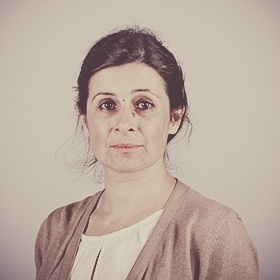
Isabel Castro
Guest Assistant Professor at the School of Applied Arts of the Polytechnic Institute of Castelo Branco; Specialist in Graphic Design; PhD in Design and Professor at the Faculty of Architecture of the University of Lisbon; Degree in Communication Design from the Faculty of Fine Arts of the University of Lisbon. Founder of the company Ideia Ilimitada, more than twenty years of career that guides innovation in various areas such as poster, editorial design, museology and study of the history of design.
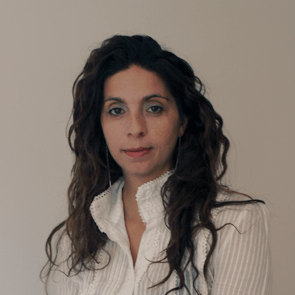
Mafalda Almeida
Doctorate in Communication Sciences and Documentation: Development of Audiovisual Products (UEx). Diploma in Advanced Studies (DEA): Audiovisual Communication and Advertising – Business and Institutional Communication (UEx). Master in Multimedia Technology – Design Profile (FEUP). Degree in Communication Design and Graphic Techniques (ESTGP). Bachelor in Communication Engineering and Graphic Techniques (ESTGP). Starts her teaching career in 2002, through Professional Technical Teaching, passing through Technological Specialization Teaching, finishing as Assistant Professor of the Degree courses in Communication Design and Animation and Multimedia Design, at ESTG of Instituto Politécnico de Portalegre. She is currently an Assistant Professor at ESART of Instituto Politécnico de Castelo Branco. E, Guest Assistant Professor at FAL of the University of Beira Interior.
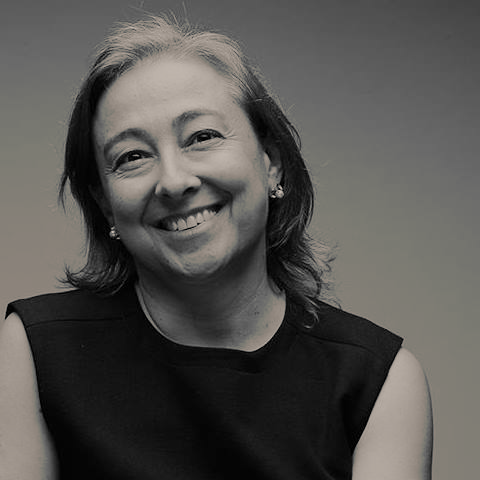
Maria Cadarso
PhD in Design from the Faculty of Architecture, University of Lisbon. She holds a degree in Design from IADE R Creative University (2003); she holds a course in “Management per le Aziende di Moda”, Villa Montalto – Art and Business School of Florence and Fashion Design from IADE R Creative University. Assistant Professor at IADE – Faculty of Design, Technology and Communication, European University. Teacher at Cascais School of Arts and Design. Integrated Researcher at CIAUD – Design Center – Faculty of Architecture, University of Lisbon. Researcher at UNIDCOM, European University. Founder and Designer of Sustenta Design. Independent external consultant COST. Independent Expert of the European Commission.

Fernando Moreira da Silva
Full Professor of Design at the Faculty of Architecture, University of Lisbon; Post-Doctorate from the University of Salford in Visual Communication Design, Inclusive Design and Colour; Doctor and Master from the University of Salford, United Kingdom in Built Environment; Graduated from the Faculty of Architecture, University of Lisbon; President of CIAUD – Research Centre for Architecture, Urbanism and Design. He develops a multidisciplinary activity with emphasis on the problems of Inclusivity and Color. He has carried out and develops an essential activity to consolidate Design Research, which has earned him an international reputation.
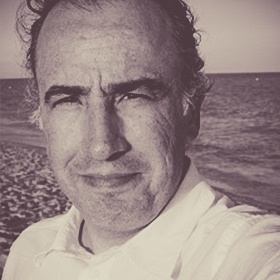
Paulo Noriega
Assistant Professor at the Faculty of Human Motricity of the University of Lisbon; PhD in Ergonomics from the University of Lisbon; Master in Human Engineering from the University of Minho; Degree in Social and Organizational Psychology from the Instituto Superior de Psicologia Aplicada. He has a scientific background focused on Psychology or Visual Ergonomics, the use of neuroscience techniques and technologies, with projects at the level of virtual reality and interactive games.
